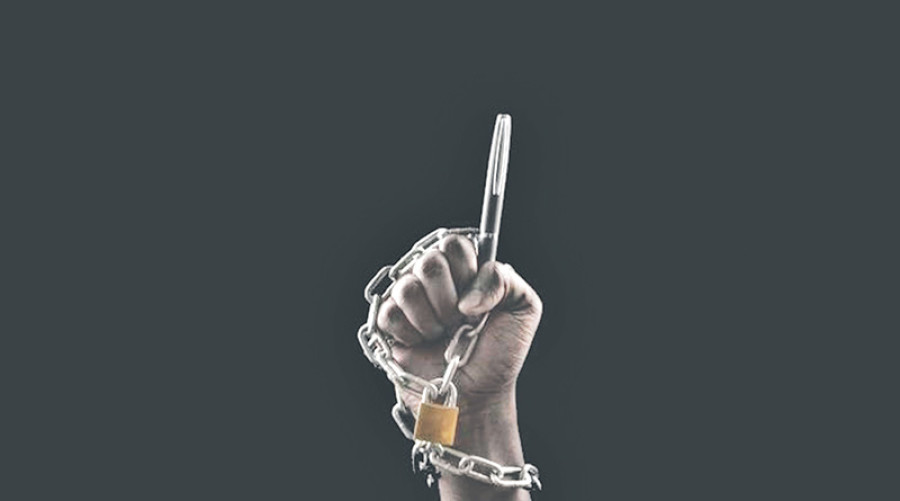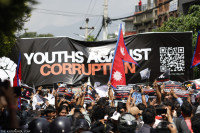Opinion
Free press for development
Government should remove obstacles that prevent people from exercising their right to information
Meera Rajbhandari Amatya
High profile Indian journalist Gauri Lankesh was recently found dead in the city of Bangalore. She was lying in a pool of blood. While the motive behind the killing was not clear, speculation has it that she was seen to be critical of Hindu nationalists, which was considered a possible reason behind her murder. According to the BBC, in the last few years, journalists seen to be critical of Hindu nationalists have been berated on social media, while many women reporters have been threatened with rape and assault. According to the Committee to Protect Journalists (CPJ), 259 journalists were imprisoned and 25 journalists were killed worldwide in 2016. Another 55 journalists are currently missing globally. Journalism is not a joke; it is a tough and risky job where people have to be patient and bold while looking for a ‘scoop’.
Historical progress
The press in Nepal has been victimised by the state and various sectors since its establishment. Subba Krishna Lal was jailed for writing Makai Ko Kheti during the Rana regime. The state jailed and harassed journalists for writing anything that was critical of the state system during the Panchayat regime in Nepal. This occurred despite the Universal Declaration of Human Rights of 1948 defining the right to information as a fundamental right of the people. Article 19 of the current Constitution of Nepal also ensures the right to information as a fundamental right.
Free press is the back bone of development. In 1901, the then Rana Prime Minister Dev Shamsher launched Gorkhapatra, the first state-run newspaper. He had a dream of increasing Nepali development by raising people’s awareness. In the first issue of Gorkhapatra, it was written that the newspaper “makes the nation free, could raise issues about religion, culture, the relation between state and people, and business and lifestyle of the people, and could take the nation on the path towards development.” Despite the fact that Gorkhapatra failed to stand completely true to its intended purpose, it did succeed in increasing the awareness of the people.
Freedom in practice
Before and after the restoration of democracy in Nepal, journalists constantly fought for freedom of the press. As a result, after the restoration of democracy in Nepal in 1990, the press was given a legal environment for freedom of expression and a fruitful environment was created for professional investment in the media industry. The number of daily and weekly newspapers and magazines increased drastically, and professional journalism was gradually established in Nepal. However, a great number of roadblocks continued to exist. Constitutional provisions mandated the creation of an environment for the publication of independent newspapers, respected freedom of expression, freedom of speech, and the right to information and fundamental rights of the people. But the problem was that these provisions did not translate entirely into practice. There was no meeting point between the press, government and other non-governmental institutions to implement such constitutional provisions.
Nepali press and media persons have undergone considerable suffering, particularly during the ten-year-long Maoist armed conflict and under the direct rule of King Gyanendra. Journalists were harassed and threatened for their writings and broadcasts. Thirty-four journalists were killed between 1996 and 2012. Journalists Deva Kumar Acharya and Nava Raj Sharma “Bashanta” were the first to be killed after the armed conflict began in 1995. Similarly, Kanchan Priyadarshi, Krishna Sen, Chin Bahadur Budha and other journalists were murdered in the period between July 23, 2001 and February 28, 2006. The status of journalists Chitra Narayan Shrestha, Milan Nepali and Prakash Thakuri are yet unknown. The violence towards press freedom has not yet ended. The Federation of Nepali Journalists (FNJ) has reported that there have been 67 press freedom violations against journalists between May 2016 and April 2017. Similarly, according to the reports of the CPJ, 1,253 journalists have been killed globally since 1992. In Iraq, 184 journalists have been killed till date this year alone. The CPJ has reported that the journalists who write about politics, war, crime and corruption are more likely to be attacked than those who are involved in any other fields of journalism.
Nepal is now supposed to be functioning under a democratic, multi-party state system. However, this is yet to be realised in practice. Recurrent threats to press freedom have weakened democratic norms and values. The government should take action and remove obstacles that prevent people from exercising their right to information through free press and violence-free press.
- Amatya is a member of the Federation of Nepali Journalists (FNJ)




 8.12°C Kathmandu
8.12°C Kathmandu










